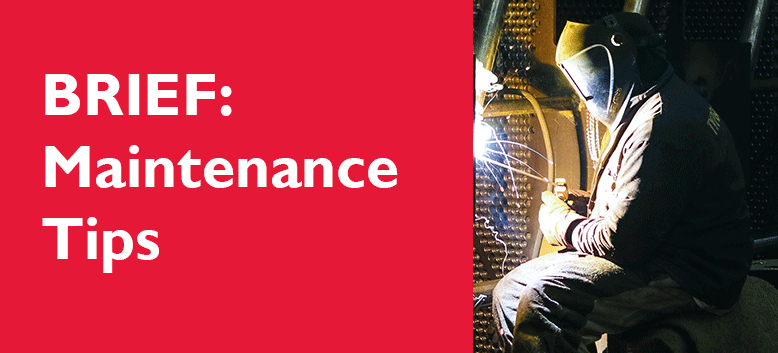Today we’re looking into the transformation of downtime into uptime. Downtime doesn’t have to be a negative if you can effectively utilize it to streamline processes, creating more efficient pipelines which result in greater future uptime and production.
The most typical form of downtime is a result of maintenance. As such, this article will largely focus on maintenance practices. Understanding the below is key to transforming downtime into future uptime, resulting in greater productivity and, ultimately, profits.
Maintenance is important to any operation. Typically, maintenance can fall into 3 distinct categories:
- Proactive Maintenance
- Proactive maintenance generally refers to activities aimed at identifying and addressing potential issues before they negatively impact future production.
- Reactive Maintenance
- Reactive maintenance is amongst the least preferred type of maintenance, as it generally pulls skilled technicians and operators away from other work
- Reactive maintenance also results in production downtime with no until maintenance is completed
- Other
- Other types of maintenance include:
- Total productive maintenance
- Total productive maintenance is a more holistic approach to maintenance. It extends to more than just equipment and machinery, but also employees, technicians, and operators.
- Deferred
- This is the least preferred type. While it may provide upfront cost savings, it is estimated that the costs of deferring maintenance compounds at 7% annually
- Total productive maintenance
- Other types of maintenance include:
See below for more information on these types of maintenance.
Proactive
Preventive
- Most popular type of proactive maintenance
- Saves 12-18% cost savings over reactive maintenance
Predictive
- Major barrier is the time to implement
- Requires the installation of sensors and software, which is used to streamline maintenance practices
- Saves 8-12% over preventive maintenance
Condition-based
- A core concept used in predictive maintenance
- Does not rely on technology, but on operators monitoring the condition and submitting work requests
- Requires highly-trained operators to spot and identify potentially hazardous conditions
Scheduled
- Most common type of proactive maintenance
- There is a difference between scheduled and planned maintenance.
- Planned maintenance implies that technicians will have all the equipment, materials, and parts required for the scheduled window.
- The negative aspect of scheduled maintenance is that it can easily become deferred maintenance, which is explored further below.
Planned
- Requires that maintenance teams have the resources available for the timing window
- Boosts other maintenance KPIs
Routine
- A form of preventive maintenance
- Typically used for tasks performed at higher frequencies, such as cleaning. For example, this may include clearing the dustbins or swapping filters in welding fume extractors.
- Also used for tasks performed less frequently, such as inspections
Reactive
Emergency
- Most reactive and intrusive type of maintenance as it pulls technicians away from other work
- Can set organizations back by days, depending on the scope of the repair
- To reduce emergency maintenance, organizations should adopt various forms of proactive maintenance
Corrective
- An inherent part of emergency maintenance
- Can be proactive if sensors detect an issue and the issue is corrected before it escalates and forces a shutdown
Other
Deferred
- Occurs when repairs and inspections are in a backlog due to limited budget and resources
- May save money upfront
- Costs of deferring maintenance compounds at approximately 7% annually
- These costs arise from:
- Fines resulting from missed inspections
- Unscheduled downtime halting production
- Deferred and emergency maintenance are the least preferred types of maintenance
Total productive
- Broadest type of maintenance
- Targets more than just equipment assets
- Also aims to improve employee satisfaction and overall morale, especially in manufacturing plants
- Achieves this by increasing overall equipment effectiveness and amount of proactive planned maintenance
- Translates to more workers having the resources to do their job
- Higher levels of satisfaction
- Also leverages operators to participate in the maintenance and take ownership of their equipment





Comments are closed.